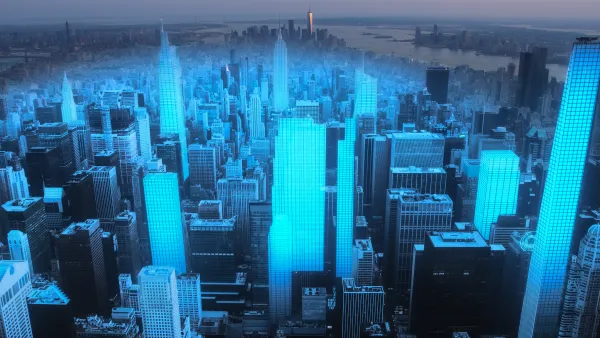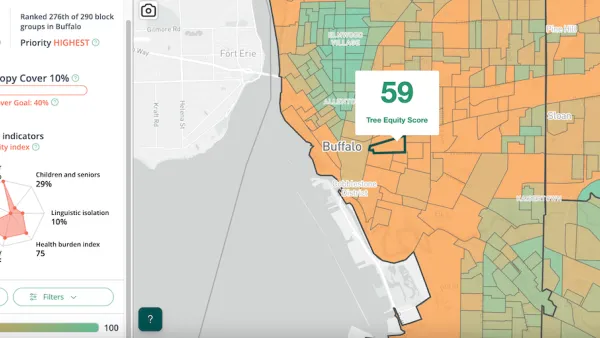As virtual reality technology becomes more accessible, it's time to start considering how immersive virtual experiences could help inform visioning process and design decision-making.

Melissa Kaplan-Macey, AICP, the vice president of state programs and Connecticut director at the Regional Plan Association, tells the story of an initial experience with augmented and virtual reality as a tool for planning.
Kaplan-Macey encountered two such technologies while visiting the IDEA lab to learn more about our New Rochelle Mayors’ Challenge Project.
Upon arrival, I was encouraged to try two technologies that the team had presented in one of its recent public outreach events at the New Rochelle Grand Market. The first was a virtual reality experience where I wore a headset and was instructed to circle parts of a local park I found most valuable. The second technology was an augmented reality game on a smartphone that allowed me to place, view (through my phone screen), and “walk around” a realistic virtual version of a park bench in the space where I was standing.
Here, Kaplan-Macey expresses the optimism for virtual reality among many of the planners who have encountered technology in a professional setting:
As an urban planner and policy analyst dedicated to ensuring a sustainable future for the NY Metropolitan region, I was excited see these prototypes and hear more about the team’s plans to use new forms of immersive media (such as augmented reality) to, as they put it: enhance the city planning process by allowing citizens new ways to co-design public spaces with their City, as well as helping citizens better visualize and understand physical projects that have already been approved or in the process of being built.
According to Kaplan-Macey, virtual reality could be a key tool in solving the biggest challenges of the era—problems that many people might believe are simply to big to solve.
FULL STORY: Champion City Part 13: Guest Post with Melissa Kaplan-Macey (RPA)

Analysis: Cybertruck Fatality Rate Far Exceeds That of Ford Pinto
The Tesla Cybertruck was recalled seven times last year.

National Parks Layoffs Will Cause Communities to Lose Billions
Thousands of essential park workers were laid off this week, just before the busy spring break season.

Retro-silient?: America’s First “Eco-burb,” The Woodlands Turns 50
A master-planned community north of Houston offers lessons on green infrastructure and resilient design, but falls short of its founder’s lofty affordability and walkability goals.

Test News Post 1
This is a summary

Analysis: Cybertruck Fatality Rate Far Exceeds That of Ford Pinto
The Tesla Cybertruck was recalled seven times last year.

Test News Headline 46
Test for the image on the front page.
Urban Design for Planners 1: Software Tools
This six-course series explores essential urban design concepts using open source software and equips planners with the tools they need to participate fully in the urban design process.
Planning for Universal Design
Learn the tools for implementing Universal Design in planning regulations.
EMC Planning Group, Inc.
Planetizen
Planetizen
Mpact (formerly Rail~Volution)
Great Falls Development Authority, Inc.
HUDs Office of Policy Development and Research
NYU Wagner Graduate School of Public Service



























